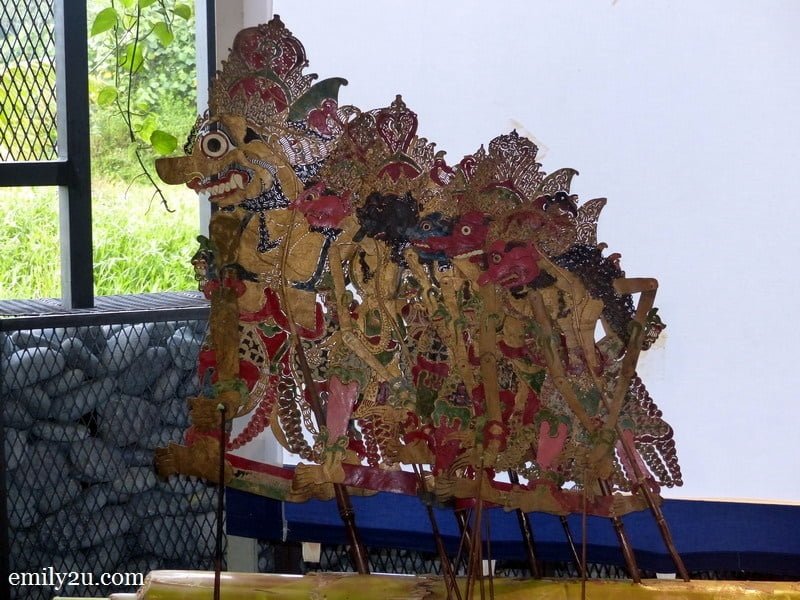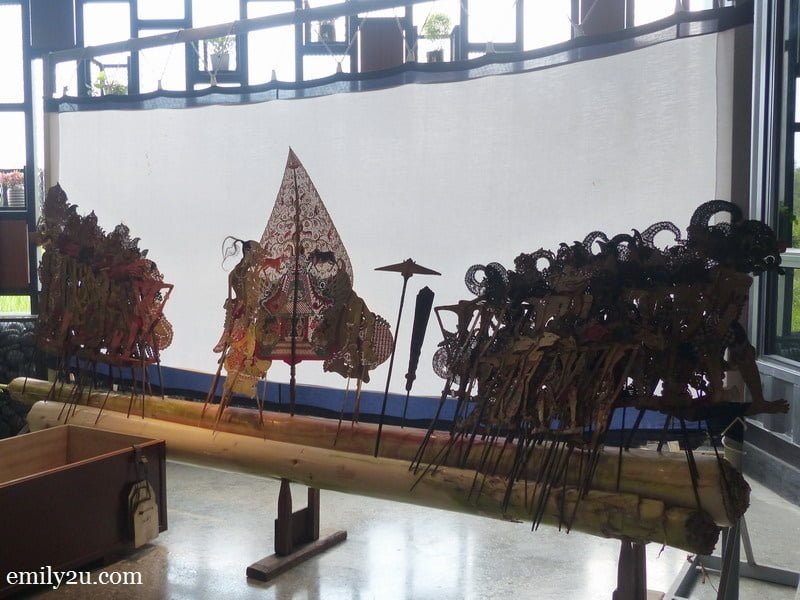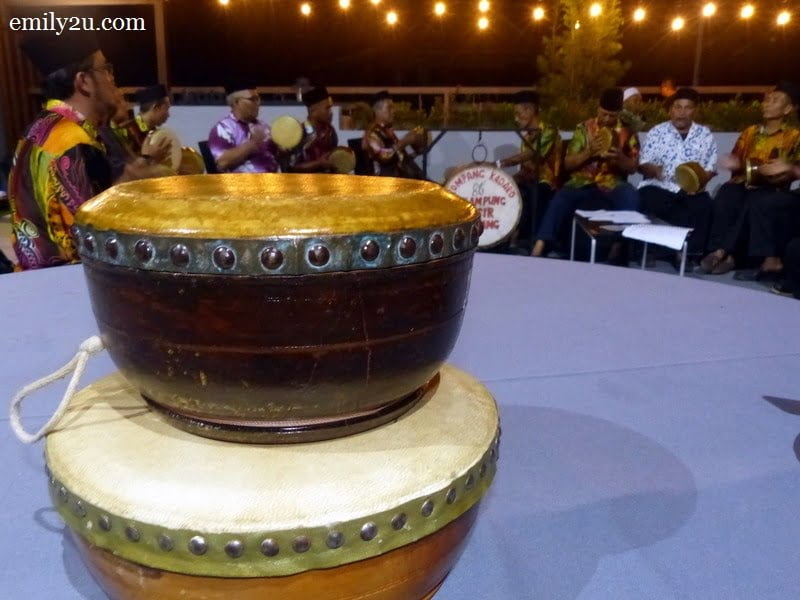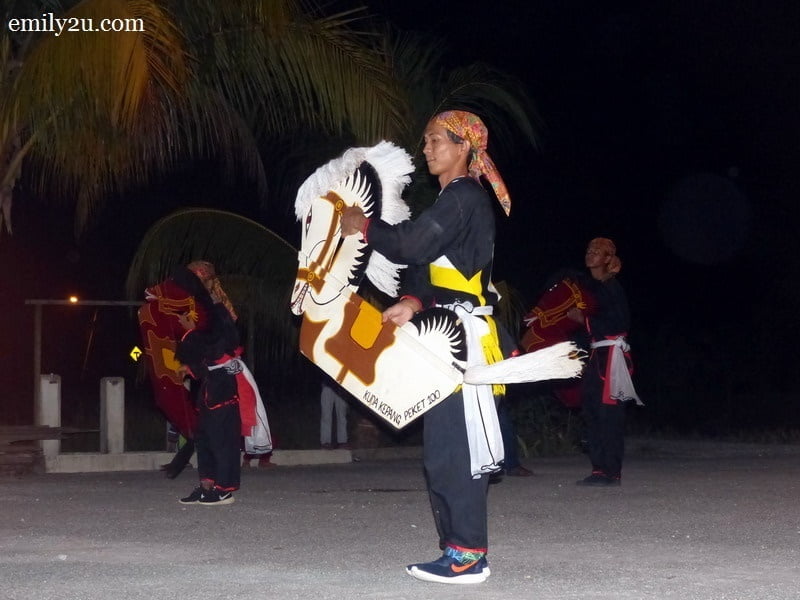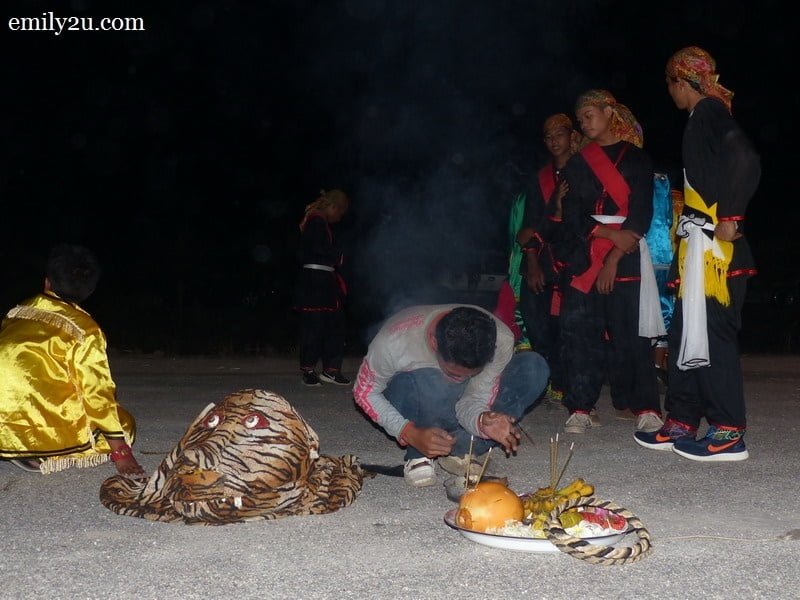Wayang Kulit
Puppet shadow play (wayang kulit) is said to have originated from Java, Indonesia. In Malaysia, it is a prominent Malay theatrical art form and has been so for many generations.
Utilising light and shadow, a wayang kulit performance is led by a “Tuk Dalang” (shadow artist) who would deftly manoeuvre the many puppets behind a white screen called “kelir” in Malay.
The two-dimensional puppets are made from cowhide and usually shaped after specific characters from wayang kulit stories, usually revolving around legends of Mahabrata and Ramayana.
The Tuk Dalang strategically positions the carved puppets in front of a hanging light bulb, so that only shadows of the puppets are visible on screen, bringing the puppets to life for the audience.
Meanwhile, as the Tok Dalang plays with the movement of the puppets, he mimics the different voices of the characters, accompanied by music from an emsemble of seven or eight members, who play the gong, a pair of geduk, gedombak, serunai, canang and kesi.
Gamelan
Also originated from Java, Indonesia, “gamelan” means “to pound upon”, which aptl describes the way the musical instruments of the Gamelan in played, by pounding on the Gong Agong, Gong Sawakan, Gendang Ibu, Gendang Anak, Saran Pekin, Saran Baron I & II, Gambang and Kenong.
While these traditional musical instruments are commonly made from bronze, there are different variants of them that are made from iron and bamboo.
The Gamelan medley is usually performed at both formal and informal ceremonies such as weddings and circumcision rites. Nine male musicians will handle the instruments and they are accompanied by six female dancers. The Javanese Gamelan is also popular in Johor and Kuala Lumpur.
Kompang
A Kompang group consists of three musicians only but Kompang Jawa, also known as Kompang Tiga, is performed by three sets of three musicians, meaning nine people.
This is also a Javanese tradition and has been inherited by the Javanese community, who make up 70% of the population in Kuala Selangor.
In the early days in Java, Kompang was performed to attract people to the teachings of Islam. In Malaysia, it is still played at mosques, madrasahs and during religious festivals and ceremonies.
Kuda Kepang
Means Braided Horse in English, Kuda Kepang is a dance from Java, Indonesia that was performed to attract peoples attention to the teachings of Islam.
Believed to be founded by Wali Songo (Nine Saints) in the 15th century, the real horses used in the dance were later replaced with a horse-shaped cutout made from bamboo or animal skin.
In Malaysia, Kuda Kepang remains a popular performance for people of Javanese descent. A Kuda Kepang performance requires nine dancers, five musicians, two shamans and at least nine assistants.
Many of the dancers end up being in trance, hence this may not be suitable for young children. Also, do take note that red colour is forbidden in the area, so people are advised not to wear read when they attend a Kuda Kepang performance.
Lion Dance
Originally from China, the lion dance traditional art has improvised so much since being brought to Malaysia that this art form is now more of a sport which welcomes the participation of anyone irrespective of race, religion or colour.
In fact, Malaysia has improved on the entire ritual by leaps and bounds in terms of the lion head and costume, footwork and music, that many international communities that have adopted the lion dance are actually following Malaysia’s footsteps, rather than the traditional art form.
Although it would be to the benefit of the lion dancer if he was trained in kung fu (or wushu / martial art), it is not a necessity. There are two styles of lion dancing; northern and southern. Although both are performed, the southern style seems to be more popular.
Note: View larger images by clicking on an image once this page has completely loaded. Then navigate by clicking on the right or left side of image.

